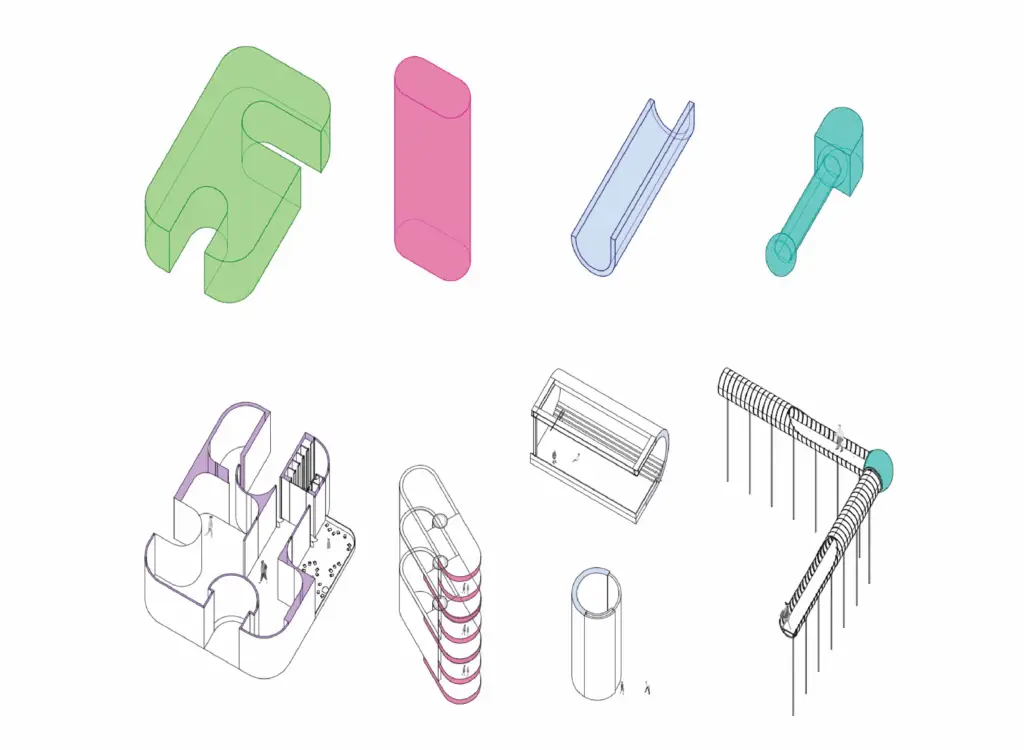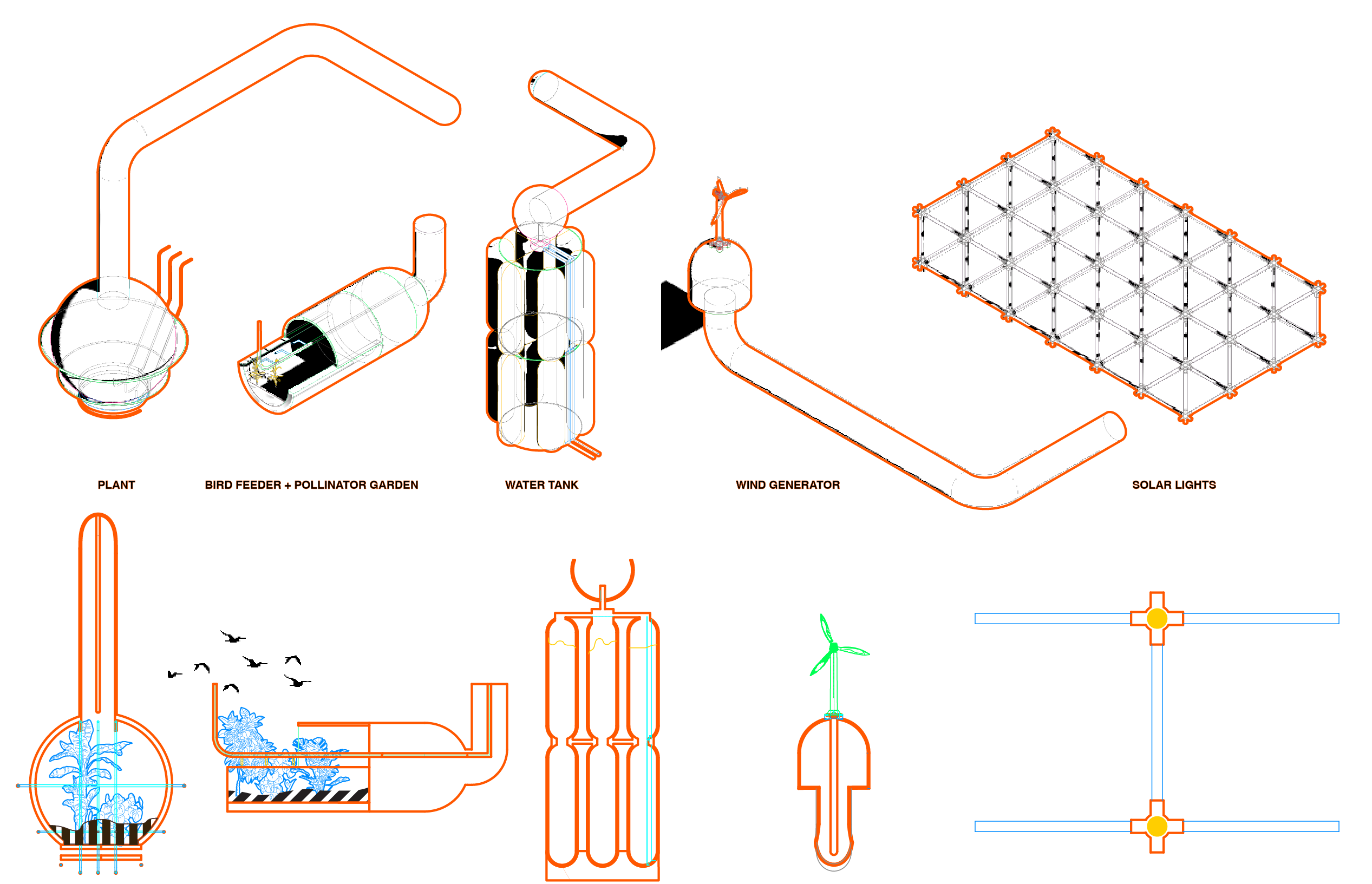This proposal imagines a future where civic buildings host both public programs and on-site renewable energy. Designed as a modular scaffold—and acting as a deliberate parasite grafted onto existing infrastructure—the structure houses solar, wind, and waste-to-resource systems while its interior program adapts to local needs. Here, the system forms a multi-modal hub—car, bus, boat, and train—designed to generate, store, and manage its own energy, water, and waste with minimal dependence on external grids.
The Site
Rosario, Argentina — a decommissioned waterfront parcel at the Port of Rosario sits fenced and inactive, its industrial relics cutting the city off from the Paraná River. Our proposal reclaims the site as a multi-modal hub—car, bus, train, and boat—while reopening safe, public access to the water.
The Kit of Parts
crane + joint study diagram
The form of the buildings in the project is derived from the industrial/port infrastructure that is found on the site. The form of a crane and its parts was taken and adapted into volumes that slot into each other.
The kit of parts/ 4 volume types :
1. Program
2. Connection to ground circulation
3. Social engagement/ structure
4. Outdoor access
The volumes are designed to slot into each other. The four volume types make one cluster or kit of pars. The project consists of 11 clusters that are connected.
The project consists of 11 clusters that are connected. The hub is divided into:
1. the international
2. the regional
3. the public


Each one of the clusters has renewable energy production components, water storage/collection, plant/animal gardens, and solar powered lights connected to it.
Plans & Roof View
At the Port of Rosario, dormant port infrastructure persists. The cluster network repurposes three obsolete buildings as renewable energy production and storage hubs—reactivating them to power the new multi-modal precinct.
Beyond an intermodal hub, this project proposes a building method—a modular template that adapts to different sites and program needs. It frames a self-sufficient, renewable-energy facility that’s tuned to its context and users, and scales from one deployment to many.
Final Physical Model
1/32″ = 1′-0″
(bristol, acrylic, foamcore, 3D printed)
ARCH 400 Advanced Design Studio
Project Partner: Arushi Patel
Project Location: Rosario, Argentina
Professors: Guillermo Banchini, Gonzalo Carbajo